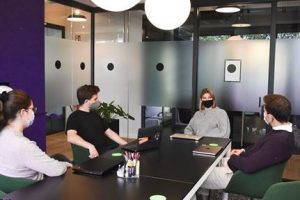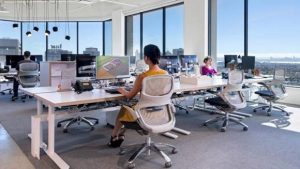The Challenges of Reentry
 Before the COVID-19 pandemic, what did you think of when you heard the word “reentry”? Perhaps a space shuttle returning to the Earth’s atmosphere came to mind. These days, “reentry” means something different. It’s all about bringing workers back into the office in an effective and safe manner. After the challenges we’ve faced over the last year and the lifestyle changes that workers have become accustomed to (and many are enjoying!), the issue of getting employees back in the workplace can be complicated and stressful.
Before the COVID-19 pandemic, what did you think of when you heard the word “reentry”? Perhaps a space shuttle returning to the Earth’s atmosphere came to mind. These days, “reentry” means something different. It’s all about bringing workers back into the office in an effective and safe manner. After the challenges we’ve faced over the last year and the lifestyle changes that workers have become accustomed to (and many are enjoying!), the issue of getting employees back in the workplace can be complicated and stressful.
Last month, we looked at why many workers are hesitant to return to workplace life post-pandemic and we also outlined steps employees can take to ease their “reentry anxiety”. But what can employers do to ease workers’ fears and hesitations, particularly in a tight labor market? With some planning and patience, there are a number of ways employers can make the back-to-office transition easier on everyone. Here are several suggestions:
- Ask workers what they want and need to feel safe and listen carefully to the answers.
- Work with employees who want to explore a hybrid working model and continue working from home in some capacity.
- Examine ways to support employees’ needs issues, such as safe commuting and childcare.
- Encourage and support managers to look for signs that workers need more support or different options to feel safe and productive.
- Set up an employee advisory board to keep an eye on how people are doing once they’re back in the office.
- Modify physical workspaces as needed to create more space between employees. Also, look for ways to boost collaboration between in-office and virtual workers.
- Redesign office common areas to create a healthy environment.
- Amend workspace policies and procedures (ie – implement staggered arrival and departure times for employees to reduce congestion in elevators, enforce new cleaning protocols for the office, make sure hand sanitizers and soap dispensers are kept full and accessible)
While we keep talking about “getting back to normal”, the workplace as we know it will probably never be the same in a post-COVID world. Moving forward, it’s vital to invest in the health of your employees and the future health of your business. Leah M Joppy and Associates can help with ways to transition your team members back to the office and make the process smoother and less stressful for everyone. Call us at 301-670-0051 or email leah@lmja.com to learn more.








